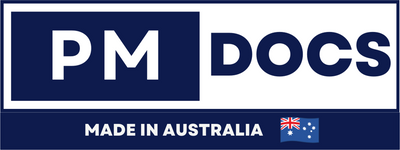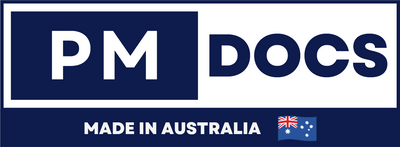ISO 50001 Energy Management In Australia: Who Needs It?
Deciphering ISO 50001 In Australia: Who Stands To Gain From Strategic Energy Management?
Australia, a nation blessed with abundant natural resources, finds itself at a pivotal juncture where energy management has become not just a business imperative but a cornerstone of national resilience and global responsibility. From the soaring electricity bills impacting household budgets to the ambitious net-zero emissions targets shaping our industrial future, energy is undeniably a critical factor in every Australian enterprise. It's against this backdrop that ISO 50001, the international standard for Energy Management Systems (EnMS), emerges as a powerful tool.

But who needs ISO 50001 in Australia? While not a mandatory regulation for most, its strategic benefits are far-reaching. This long-form exploration will delve into the essence of ISO 50001, illuminate the unique Australian energy landscape, and pinpoint the organisations that stand to gain the most from its systematic approach to energy efficiency.
What Is ISO 50001 And Why Does It Matter?
At its core, ISO 50001 provides a robust framework for organisations to establish, implement, maintain, and improve an Energy Management System. Much like its more famous counterparts, ISO 9001 (Quality) and ISO 14001 (Environmental), ISO 50001 is built on the universally recognised Plan-Do-Check-Act (PDCA) cycle, ensuring continuous improvement.
Its primary objectives are to:
-
Reduce energy consumption and costs: By identifying significant energy users and implementing efficiency measures.
-
Minimise greenhouse gas emissions: Directly contributing to climate change mitigation efforts.
-
Improve energy performance: Through systematic monitoring, measurement, analysis, and reporting.
-
Ensure compliance: With legal and other energy-related requirements.
- Enhance organisational reputation: Demonstrating a commitment to sustainability and responsible operations.
In the Australian context, where energy costs are often volatile and the push for decarbonisation intensifies, adopting such a systematic approach is no longer a luxury but a strategic advantage.
Australia's Energy Landscape: A Complex Web
Australia's energy market is characterised by high costs, an evolving regulatory environment, and a growing emphasis on renewable energy. Businesses grapple with:
-
High & Volatile Energy Prices: Electricity and gas costs have been a significant concern for years, with businesses facing unpredictable price shocks due to supply issues, infrastructure constraints, and geopolitical factors.
-
Climate Change Targets: Australia is committed to national emissions reduction targets, including a 43% reduction by 2030 (from 2005 levels) and net-zero by 2050. This places increasing pressure on all sectors to decarbonise.
-
Regulatory Obligations: Schemes like the National Greenhouse and Energy Reporting (NGER) Act require mandatory reporting of greenhouse gas emissions, energy consumption, and energy production for large emitters. State-based energy efficiency schemes (e.g., NSW Energy Savings Scheme, Victorian Energy Upgrades) also provide incentives for energy reduction.
-
ESG Investor Pressure: Environmental, Social, and Governance (ESG) factors are increasingly influencing investment decisions. Strong energy management practices contribute positively to an organisation's ESG profile.
- Operational Resilience: Reducing reliance on external energy sources and improving efficiency enhances a business's capacity to withstand market fluctuations and supply disruptions.
Who Truly Needs ISO 50001 In Australia?
While any organisation consuming energy can benefit, certain sectors and types of businesses in Australia are particularly well-suited to implement and certify to ISO 50001. It's not about being legally mandated, but about aligning strategic goals with operational excellence.
Here’s a breakdown of who stands to gain the most:
1. High Energy Consumers
Organisations where energy costs represent a significant portion of their operational expenditure are prime candidates. Even marginal improvements can lead to substantial financial savings.
-
Manufacturing & Industrial Facilities: Steel, aluminium, cement, food processing, chemicals, textiles – these sectors are inherently energy-intensive. ISO 50001 provides the framework to systematically identify and address energy wastage in processes, equipment, and building systems.
-
Mining Operations: Extensive machinery, ventilation systems, dewatering, and processing plants make mining a colossal energy consumer. Optimising these can yield massive savings and reduce environmental impact.
-
Data Centres: With their continuous power demands for servers, cooling, and infrastructure, data centres can achieve significant operational efficiencies and cost reductions through ISO 50001.
- Large Commercial Buildings & Property Portfolios: Shopping centres, hospitals, universities, office towers, and large hotel chains can use ISO 50001 to manage HVAC, lighting, and other building services across multiple sites systematically.
2. Organisations with Existing Environmental or Quality Management Systems
For businesses already certified to ISO 14001 (Environmental Management) or ISO 9001 (Quality Management), integrating ISO 50001 is a logical and relatively streamlined process. The management system structure is familiar, reducing implementation hurdles and leveraging existing internal expertise. It offers a comprehensive sustainability framework.
3. Companies Facing Significant Regulatory Reporting (e.g., NGER Reporters)
While ISO 50001 is distinct from NGER, it significantly supports NGER compliance. Organisations required to report under NGER will find that the data collection, monitoring, and analysis processes required by ISO 50001 streamline and improve the accuracy of their NGER reporting. It moves beyond mere reporting to active management and reduction.
4. Businesses with Strong Sustainability & ESG Commitments
For organisations keen to demonstrate genuine commitment to sustainability, beyond just rhetoric, ISO 50001 offers verifiable proof. It enhances their Environmental, Social, and Governance (ESG) credentials, which is increasingly important for attracting investors, talent, and environmentally conscious customers.
5. Multi-Site National or International Operations
Companies with operations across multiple locations benefit immensely from a standardised approach to energy management. ISO 50001 provides a consistent methodology that can be applied universally, facilitating benchmarking, best practice sharing, and aggregated energy performance improvements.
6. Public Sector Entities and Government Departments
Government agencies and public institutions, often under pressure to demonstrate fiscal responsibility and environmental leadership, can use ISO 50001 to manage their energy consumption efficiently, reduce taxpayer-funded costs, and set an example for others.
Table 1: Key Australian Sectors And Their Primary Drivers for ISO 50001 Adoption
| Sector / Type of Organisation | Primary Drivers for ISO 50001 Adoption in Australia | Potential Key Benefits |
|---|---|---|
| Manufacturing & Industry | High energy costs, competitive pressure, emissions reduction targets, supply certainty. | Significant cost savings, reduced carbon footprint, enhanced operational efficiency. |
| Mining & Resources | Massive energy consumption, remote operations, social license to operate, emissions reporting. | Substantial cost savings, improved energy security, better stakeholder relations. |
| Large Commercial Property | Tenant demand for green buildings, operational overheads, NABERS ratings, ESG investor appeal. | Reduced operating costs, increased property value, tenant attraction/retention, brand enhancement. |
| Data Centres | Continuous power demand, cooling costs, redundancy requirements, PUE optimisation. | Lower PUE (Power Usage Effectiveness), reduced operating costs, improved resilience. |
| Healthcare (Hospitals) | 24/7 operation, critical infrastructure, high HVAC & lighting demands, budget constraints. | Cost savings, improved patient comfort, enhanced public image, better resource allocation. |
| Universities & Education | Large campuses, significant building energy use, student/staff sustainability expectations, public funding efficiency. | Reduced utility bills, positive institutional image, practical sustainability education. |
| Organisations with NGER obligations | Compliance burden, need for accurate data, desire to move beyond reporting to active management. | Streamlined reporting, data accuracy, identification of reduction opportunities, reduced penalty risk. |
| Companies pursuing strong ESG targets | Investor scrutiny, brand reputation, market differentiation, attracting talent. | Enhanced ESG ratings, improved brand perception, competitive advantage, access to green finance. |
Key Benefits Of Implementing ISO 50001 In Australia
Beyond identifying who needs it, understanding the tangible returns solidifies the case for ISO 50001. The benefits extend far beyond simple cost-cutting:
-
Measurable Cost Savings: This is often the primary driver. By systematically identifying and addressing areas of energy waste, organisations can achieve significant and sustained reductions in energy bills.
-
Reduced Carbon Footprint: Direct correlation between lower energy consumption and fewer greenhouse gas emissions, helping meet both internal and national targets.
-
Enhanced Operational Efficiency: A deeper understanding of energy flows leads to process optimisation, equipment upgrades, and more efficient resource allocation.
-
Improved Compliance Management: The EnMS provides a structured way to identify, monitor, and ensure compliance with all relevant energy legislation and regulations, reducing the risk of penalties.
-
Better Data for Decision-Making: ISO 50001 mandates robust energy data collection and analysis, empowering leaders with accurate information for strategic planning and investment.
-
Increased Organisational Resilience: Reducing energy consumption and diversifying supply can mitigate risks associated with energy price volatility and supply disruptions.
-
Positive Brand Image & Stakeholder Engagement: Demonstrates genuine commitment to sustainability, resonating with customers, employees, investors, and the broader community.
-
Competitive Advantage: Certified organisations can differentiate themselves in the market, particularly when tendering for contracts that prioritise sustainability.
- Unlocking Government Incentives: While not always direct, a structured EnMS can facilitate access to various government grants, rebates, and schemes aimed at energy efficiency.
Table 2: ISO 50001 vs. Other Australian Energy Initiatives – A Complementary Approach
| Initiative | Primary Focus | Relationship with ISO 50001 |
|---|---|---|
| NGER Scheme | Mandatory reporting of emissions & energy data for large users. | Complements: ISO 50001's strong data collection and management framework significantly aids NGER compliance and accuracy. It moves from reporting to managing emissions. |
| State Energy Efficiency Schemes (e.g., NSW ESS, VIC VEU) | Incentivise energy savings through tradable certificates (VEECs, ESCs). | Complements: An ISO 50001 system can help identify projects eligible for these schemes and systematically track savings for certificate creation. It provides the system to find the opportunities. |
| NABERS Energy Ratings | Benchmarking energy efficiency for buildings (offices, hotels, etc.). | Supports: An EnMS can drive the operational improvements needed to achieve and maintain high NABERS ratings. ISO 50001 addresses the how to improve performance. |
| Clean Energy Regulator Programs | Various grants, auctions, and schemes to support emissions reduction and renewable energy projects. | Facilitates: Organisations with an ISO 50001 system are often better positioned to identify, plan, and execute projects that may qualify for these programs, with robust data to support applications. |
| ISO 14001 (Environmental Mgmt.) | Broad environmental impact management. | Synergistic: ISO 50001 can be integrated easily into an existing ISO 14001 system, providing a focused, detailed approach for the energy aspect of environmental management. |
Conclusion: A Strategic Imperative, Not Just A Standard
In Australia's dynamic energy landscape, ISO 50001 is much more than just another certification; it’s a strategic enabler. For high-energy consumers, it promises substantial financial relief and enhanced competitiveness. For those with a clear eye on environmental responsibility and ESG performance, it offers a credible framework for action. And for any organisation seeking greater operational resilience and a future-proof business model, it provides the systematic approach needed to navigate a complex and evolving energy market.
While the "need" for ISO 50001 may not always be regulatory, the pressing economic, environmental, and reputational drivers in Australia make a compelling case for its adoption. Organisations that proactively embrace strategic energy management through ISO 50001 will undoubtedly be better positioned to thrive in the sustainable economy of tomorrow. It's time to see energy management not as a cost centre, but as a strategic asset.




